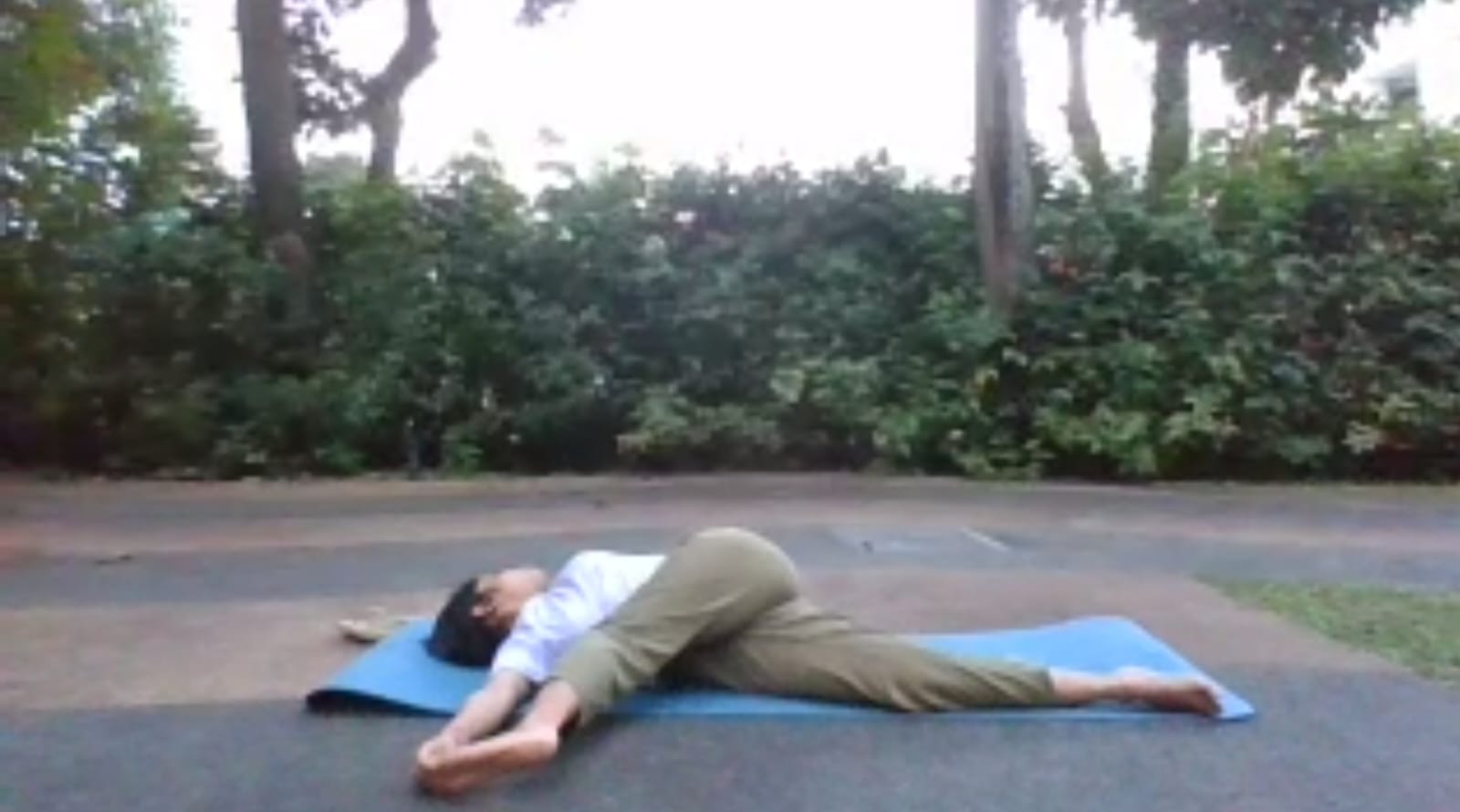Healing Through Attention: When One-to-One Yoga Becomes Therapeutic
In our increasingly fast-paced world, health challenges—both physical and emotional—have become commonplace.Yoga, with its ancient roots and modern applications, has emerged as a powerful therapeutic tool. However, not all yoga experiences offer the same healing potential. Yoga is practiced in over 80 countries worldwide, with increasing popularity in Europe and Asia .At Shyambhai Yoga, we’ve witnessed extraordinary transformations through one to one online yoga classes, where the focused attention of personalized instruction creates an environment conducive to deep healing.

Beyond the Group Class Experience
Group yoga classes serve an important purpose in making yoga accessible and building community. However, when it comes to addressing specific health challenges, the limitations of group instruction become apparent:
- Generalized instruction cannot account for individual conditions, injuries, or limitations
- Divided attention from the teacher means less precise guidance and feedback
- Standardized pacing may be too fast for those with health challenges or too slow for quick learners
- Limited modifications typically address common needs rather than specific therapeutic requirements
- Minimal integration of other healing modalities that might enhance therapeutic outcomes
The Therapeutic Power of Focused Attention
1. Precision in Practice
In personalized sessions, every detail matters. The teacher can observe subtle patterns that would go unnoticed in a group setting—the slight favoring of one side during standing poses, the unconscious holding of breath during transitions, or the habitual tensing of the jaw during challenging moments..
2. Safety Through Adaptation
For individuals with health challenges, safety becomes paramount. One-to-one instruction allows for continuous assessment and adaptation based on:
- Day-to-day variations in energy, pain levels, or mobility
- Medication effects that might impact balance, strength, or concentration
- Emotional readiness for different aspects of practice
- Progression of healing as recovery unfolds
3. Integration of Multiple Approaches
Therapeutic yoga rarely relies on physical postures alone. One-to-one sessions create space for integrating multiple healing modalities such as:
- Targeted breathwork designed for specific conditions
- Meditation techniques tailored to psychological needs
- Relaxation methods addressing individual stress patterns
- Sound healing customized to personal resonance
- Therapeutic touch (when appropriate and with consent)
4. The Witness Effect
Perhaps the most profound aspect of one-to-one yoga therapy is what might be called “the witness effect.” Having another person attentively observe your experience—without judgment—creates a powerful container for transformation.
This compassionate witnessing allows for:
- Normalized expression of physical and emotional challenges
- Validation of experience that may have been dismissed elsewhere
- Externalized awareness that complements internal observation
- Safe vulnerability that often precedes breakthrough moments
Many students report that simply being seen in their struggle—having their experience acknowledged with compassion—initiates healing even before specific techniques are applied.

Common Conditions Responsive to One-to-One Yoga
While personalized yoga therapy can benefit almost anyone, certain conditions have shown particular responsiveness to this approach:
Physical Conditions
- Chronic pain syndromes (including fibromyalgia and complex regional pain)
- Back, neck, and shoulder issues (herniated discs, sciatica, frozen shoulder)
- Joint conditions (arthritis, hypermobility disorders)
- Neurological challenges (MS, Parkinson’s, stroke recovery)
- Respiratory disorders (asthma, COPD)
- Cancer recovery and treatment support
- Autoimmune conditions (including inflammatory disorders)
The effectiveness of One-to-One Online Yoga Classes for these conditions stems from its ability to address not just symptoms but underlying imbalances, while simultaneously working with the mind-body connection that influences all health states.
The Science Behind Individualized Yoga Therapy
Research into yoga’s therapeutic effects has expanded dramatically in recent years, with studies supporting its efficacy for numerous conditions. Several mechanisms explain why personalized approaches often yield superior results:
Nervous System Regulation
Many health challenges involve dysregulation of the autonomic nervous system—either excessive sympathetic activation (“fight-or-flight”) or inadequate parasympathetic response (“rest-and-digest”). Personalized yoga therapy uses targeted techniques to address your specific pattern of dysregulation, creating systemic benefits that extend beyond individual symptoms.
Inflammatory Response Modulation
Chronic inflammation underlies many modern health conditions. Studies show that yoga can influence inflammatory markers, with effects varying based on practice intensity and components. Personalized approaches allow for precise calibration of practice to optimize anti-inflammatory effects for your particular condition.
Psychological Mechanisms
The psychological aspects of one-to-one yoga—including the therapeutic relationship, attention quality, and safe environment—activate healing mechanisms similar to those in psychotherapy. These include improved self-efficacy, reduced catastrophizing, enhanced body awareness, and reconsolidation of traumatic memories.

The Virtual Advantage in One-to-One Yoga
While in-person instruction has traditionally been the gold standard for therapeutic yoga, online delivery has revealed surprising advantages:
Home Environment Integration
Practicing in your own space allows for immediate integration of yoga into your daily environment. Teachers can see the actual conditions of your life—your furniture, floor surfaces, available props—and adapt practices accordingly. This contextual understanding often leads to more practical, sustainable recommendations.
Reduced Barriers to Access
For individuals with health challenges, travel to in-person sessions can present significant obstacles. Online sessions eliminate these barriers, making consistent practice possible even during pain flares, fatigue episodes, or mobility limitations. This consistency itself becomes therapeutic, building momentum in the healing process.
Geographic Freedom
Online delivery connects you with specialized teachers regardless of location. Rather than limiting yourself to locally available instructors, you can work with teachers who have expertise in your specific condition, regardless of geographic constraints.
Enhanced Comfort and Safety
For many people—particularly those dealing with trauma, body image concerns, or social anxiety—the familiar safety of home creates an environment more conducive to vulnerable exploration and healing. This psychological safety allows for deeper work than might be possible in unfamiliar surroundings.
Creating the Optimal Therapeutic Relationship
The effectiveness of one-to-one yoga therapy depends significantly on the relationship between teacher and student. Key qualities to seek include:
Appropriate Expertise
Different health challenges require different expertise. A teacher skilled in working with structural issues may not have the specialized knowledge needed for trauma-informed approaches, and vice versa. Look for instructors with specific training and experience relevant to your particular needs.
Collaborative Approach
Effective yoga therapy involves partnership rather than prescription. Your insights about your own body and experience are essential data in the therapeutic process. Look for teachers who genuinely value your input and incorporate your feedback into the evolving practice.
.
Beginning Your Therapeutic Journey
If you’re considering one-to-one yoga as a therapeutic approach, these steps can help you begin effectively:
1. Clarify Your Intentions
Before your first session, reflect on what you hope to address through yoga therapy. While these intentions may evolve, initial clarity helps guide the process and sets appropriate expectations.
2. Prepare Your Space
For online sessions, create a practice environment that supports therapeutic work. This might include:
- Sufficient open floor space
- Basic props (or household substitutes)
- Minimal distractions
- Privacy for vulnerable exploration
- Stable internet connection and device positioning
3. Communicate Medical Context
Share relevant medical information with your teacher, including diagnoses, medications, and other treatments. While yoga teachers don’t provide medical advice, this context helps them create safe, complementary practices.
Also Read Best Yoga Asanas for a Stronger and Toned Core
Conclusion: The Healing Potential of Being Truly Seen
Perhaps the most powerful aspect of one-to-one yoga is the rare experience of being fully seen and accepted exactly as you are—in your struggle, your pain, your effort, and your healing. In a world where we often feel invisible or reduced to our symptoms, this attentive witnessing creates a foundation for profound transformation.
At Shyambhai Yoga, our approach to One to One Online Yoga Classes honors this healing potential of focused attention. We believe that true therapeutic yoga creates not just better physical function but a deeper relationship with yourself—a compassionate presence with your own experience that continues long after the session ends.
Inquiry
If you have any questions, please feel free to reach out. We’ll be glad to help!

